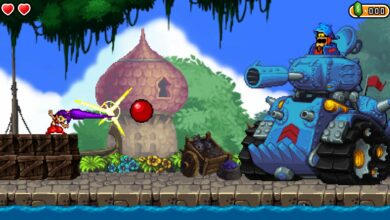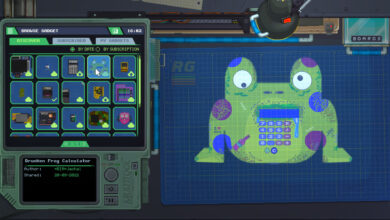
They say restrictions breed creativity. A completely blank page or a directionless pile of building blocks can be an intimidating thing, and that feeling hit me full force when I first loaded into the demo of Plasma, a sci-fi building game coming to early access next year. But as I got acclimated to its surroundings and systems, I found some helpful constraints that pushed me toward a satisfying loop of tinkering and tweaking.
The developers describe Plasma as a “creative engineering playground,” and it is a pure sandbox sim. Its demo was just released last week during Steam’s Next Fest along with a cute behind-the-scenes making-of for the trailer, which shows how it was entirely put together with in-game tools. With no campaign in the demo and none planned for release, the focus in Plasma is really on creativity.
Even in demo form, Plasma gives you robust systems to build your own structures, robots, and worlds. There are hundreds of components, and all of them can be customized. There’s also a visual programming language you can use to control and manipulate almost every mechanical component.
The tutorial introduces you to core game concepts: I play with an RC car using a little joystick nearby, and a bunny-shaped robot sits at the next station, stuck in ‘wireframe mode.’ With it I can basically turn any object in the game world immaterial and manipulate it without gravity, making it easier to get to hard-to-reach sections. Next I run into a car that’s missing a wheel, which I drive around once I fix it. It doesn’t go very fast, but I still ended up crashing into the bunny bot, which made him sad.
(Image credit: Dry Licorice)
A nearby structure has a broken switch that introduces me (very gently, thankfully) to its programming language. There’s a “sketch” panel which lets me drag and drop components to establish logic and functionality. For this one, you simply drag a line from the button over to the door, and then when you go back outside and hit the button it’ll open the door. When you’re actually working with it for your own creations, it’s a bit more complex. The screenshot below shows a simple sketch I made to use one button to both open and close a nearby door.
(Image credit: Dry Licorice)
The visual programming language is pretty intuitive, but it makes me wonder if there will be some kind of manual released with Plasma, because it’s extremely detailed. The devs put an arcade cabinet in the tutorial with a functioning version of Pong in it, programmed entirely using in-game tools. I also found a cabinet with a simplified version of Space Invaders when I went poking around in the corners of the starter world.
A remote controlled drone, a console that lets you switch between night and day, and an operational Ferris wheel later, I finally make it to the Building Area. Here the game opens up and you can access the full complement of tools and utilities. There are a few step-by-step guides that show you how to make a flashlight, a small base, and a plasma cannon. I spent extra time tricking out my cannon because I knew I was going to need it. You always need a plasma cannon.
(Image credit: Dry Licorice)
(Image credit: Dry Licorice)
The best part of any game that features an extensive sandbox is checking out all the cool stuff smarter and more creative people have made with it. Despite still only being a demo, Plasma is no different. There are already tons of cool robots, structures, and components people have built that I was able to import into my own game. With a click of a button you can build them in your own world and tinker with them, take them apart, or pore through their programming. One player even made a drone that follows you around using laser rangefinders to maintain a safe following distance and stable altitude. Practical.
More practical: Building a dragon so you have something to shoot at with that plasma cannon.
(Image credit: Dry Licorice)
There’s tons of potential in Plasma. You can change permissions in your worlds to allow or disable players to do basically anything, with incredible granularity. I’m already imagining people building escape rooms with hidden switches and password puzzles, giant robot obstacle courses, and engineering challenges. I was just happy I got the door working. I had to, to deal with all of the frogbots.
(Image credit: Dry Licorice)






